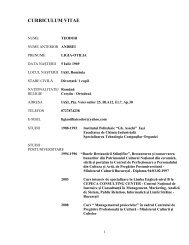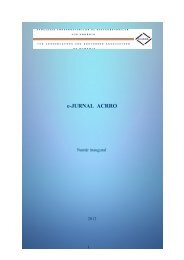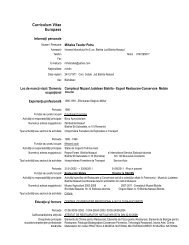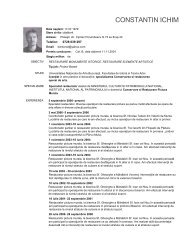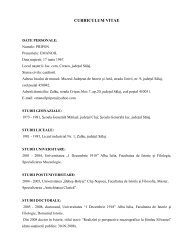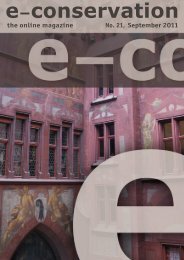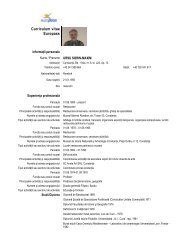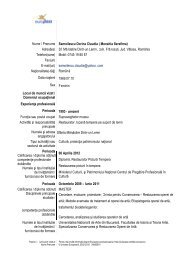e-conservation the online Magazine 16, oct 2010.pdf
e-conservation the online Magazine 16, oct 2010.pdf
e-conservation the online Magazine 16, oct 2010.pdf
You also want an ePaper? Increase the reach of your titles
YUMPU automatically turns print PDFs into web optimized ePapers that Google loves.
IDENTIFICATION OF IVORY BOOK COVERS<br />
Ancient carvers managed to hand cut ivory into<br />
a thin veneer cylinder, which was cut into pieces<br />
and subsequently softened and mounted upon <strong>the</strong><br />
curved faces and hands of sculptures [1]. Medieval<br />
book covers may have been made this way as <strong>the</strong>re<br />
are some early surviving ivory book covers as large<br />
as 30 cm square [1].<br />
The size of leaves was limited by <strong>the</strong> diameter of<br />
tusks, until technology developed for <strong>the</strong> production<br />
of larger sheets of ivory in <strong>the</strong> early 19 th century<br />
[<strong>16</strong>]. Ivory was spiral cut with a reciprocating<br />
saw into a scroll, steamed until soft, <strong>the</strong>n subjected<br />
to hydraulic pressure to flatten to a desired size<br />
[<strong>16</strong>]. The resulting ivory had an increased flexibility,<br />
a finer polish, and less grain patterns [17], but <strong>the</strong><br />
surface was often wavy and needed to be laid down<br />
on stiff card before painting could begin [<strong>16</strong>].<br />
Miniaturists were traditionally concerned about<br />
<strong>the</strong> permanence and stability of <strong>the</strong>ir ivory leaves<br />
[<strong>16</strong>]. Veneer cut ivory proved undesirable as <strong>the</strong><br />
ivory was prone to shattering into thin, parallel<br />
segments [<strong>16</strong>]. Therefore, miniaturists continued<br />
to cut leaves in <strong>the</strong> traditional manner, just as <strong>the</strong>y<br />
continued to use <strong>the</strong> same materials and techniques<br />
since <strong>the</strong> 18 th century [<strong>16</strong>]. Since watercolour paint<br />
did not readily adhere to <strong>the</strong> ivory material, miniature<br />
leaves required <strong>the</strong> extra steps of degreasing,<br />
whitening, and scraping [18].<br />
Risks for Deterioration of Ivory<br />
The most common instances of ivory deterioration<br />
are warping, cracking and complications arising<br />
from added materials. Ivory is a relatively stable<br />
material, but only in a constant environment [19].<br />
It is an anisotropic material, and is <strong>the</strong>refore susceptive<br />
to warping and cracking on exposure to<br />
heat or moisture [3]. Thin artifacts such as miniatures<br />
and book covers are especially vulnerable,<br />
as even moisture and heat from hands may be<br />
damaging [3].<br />
Warping<br />
The risk of warping is increased when <strong>the</strong> ivory is<br />
mounted on stiff backing cards, restricting natural<br />
Figure 9. Severe warp of a portrait miniature at LAC.<br />
e-<strong>conservation</strong><br />
31



